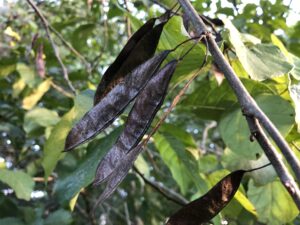Seed Saving
go.ncsu.edu/readext?823048
en Español / em Português
El inglés es el idioma de control de esta página. En la medida en que haya algún conflicto entre la traducción al inglés y la traducción, el inglés prevalece.
Al hacer clic en el enlace de traducción se activa un servicio de traducción gratuito para convertir la página al español. Al igual que con cualquier traducción por Internet, la conversión no es sensible al contexto y puede que no traduzca el texto en su significado original. NC State Extension no garantiza la exactitud del texto traducido. Por favor, tenga en cuenta que algunas aplicaciones y/o servicios pueden no funcionar como se espera cuando se traducen.
Português
Inglês é o idioma de controle desta página. Na medida que haja algum conflito entre o texto original em Inglês e a tradução, o Inglês prevalece.
Ao clicar no link de tradução, um serviço gratuito de tradução será ativado para converter a página para o Português. Como em qualquer tradução pela internet, a conversão não é sensivel ao contexto e pode não ocorrer a tradução para o significado orginal. O serviço de Extensão da Carolina do Norte (NC State Extension) não garante a exatidão do texto traduzido. Por favor, observe que algumas funções ou serviços podem não funcionar como esperado após a tradução.
English
English is the controlling language of this page. To the extent there is any conflict between the English text and the translation, English controls.
Clicking on the translation link activates a free translation service to convert the page to Spanish. As with any Internet translation, the conversion is not context-sensitive and may not translate the text to its original meaning. NC State Extension does not guarantee the accuracy of the translated text. Please note that some applications and/or services may not function as expected when translated.
Collapse ▲One of the enjoyable and important activities I do each year at this time is collecting seeds. There are many plants for which other propagation methods make more sense, but seed propagation is important for annuals, perennials and even some woody plants. These seeds when properly stored and grown will yield plants that will someday be part of our plant sale, or are planted in the landscape at Bullington Gardens.
There are a few things to consider when collecting seeds. Hybrids, those plants that are the result of cross pollinating two different parents, do not necessarily grow true. This means they will express traits from previous generations and not be the same as the plant the seeds were taken from. Collecting seeds from open pollinated plants (non hybrids) will yield more reliable results.
Collect seeds that are fully mature, or come from ripe (even over ripe) fruit. Make sure the plants are robust, healthy and free of disease as much as possible.
Seeds need to be fully dry before storing them away. They are best stored in cold, dry environments and can be done in a jar, or plastic container in the refrigerator.
Some plants, such as marigolds, zinnias, coneflowers and black-eyed susans produce naked seeds. These can be simply pried out of the seed head and separated from the chaff. and dried.
Other seeds are produced in pods or capsules, such as beans, columbine, redbuds, native azaleas. Once these become brown and dry, seeds can be removed and further dried before storing.
Other seeds develop inside fleshy fruit such as pumpkins, peppers, Solomon seal, and kousa dogwood. These seeds need to be extracted and have any fruit residue washed off. Some seeds, like magnolias, have a waxy coating that is not easily removed. But leaving this waxy fruit will inhibit germination. Tomato seeds have a gelatinous coating that is best removed by squeezing the contents of the tomato in a cup and letting the whole mess ferment for a few days. They can then be washed in a sieve and left to dry on a paper towel.
When it comes time to plant these seeds, it’s important to check whether either internal or external dormancy (or both) is a factor for each plant type. Vegetables and annuals are usually ready to plant anytime. However some, like moonvines, do have very hard seeds and exhibit external dormancy. These need to be softened or scratched (scarification) before they will germinate. Many seeds from perennials and woody plants exhibit internal dormancy. These seeds typically need to experience winter-like conditions (stratification) before they will germinate. This can be done by mixing seeds with damp sand in a plastic bag and placing in the refrigerator for a few months. Knowing exactly how long to do this for each plant will take some further research, since all are different. Or another method is to plant seeds in containers outside and let winter do the job it would normally do.
Collecting and growing seeds is a very gratifying activity. It can save a gardener money on purchasing seeds and gives them more options on plants to install in the landscape. However, patience is definitely needed.






